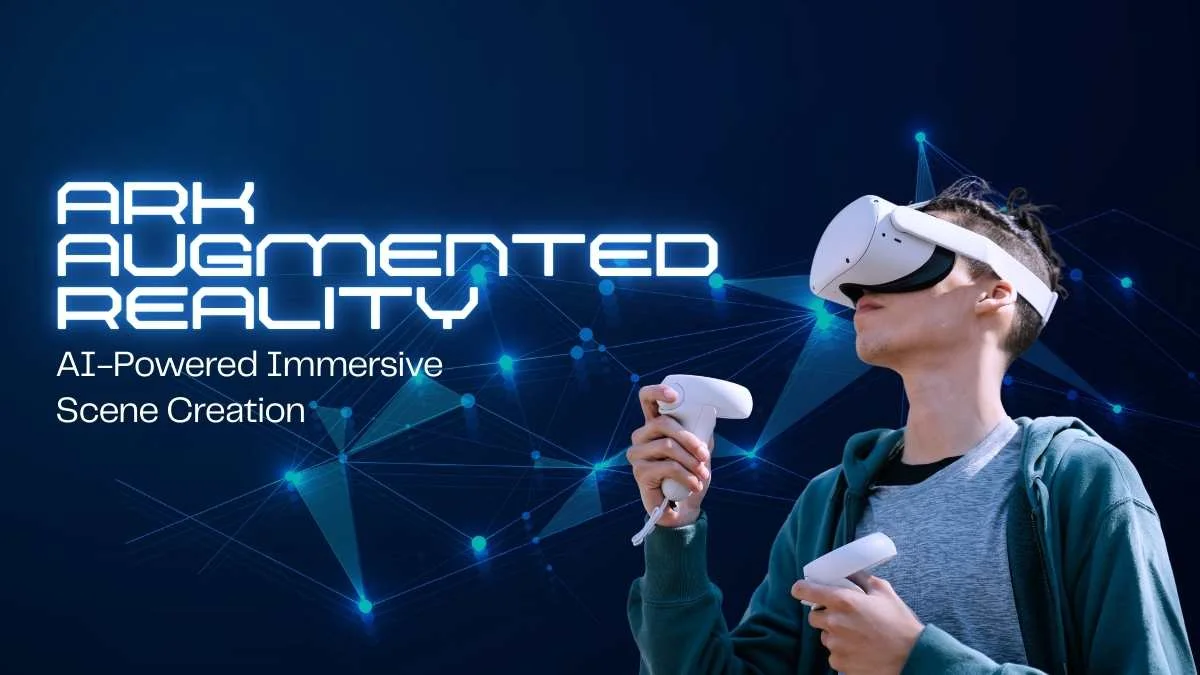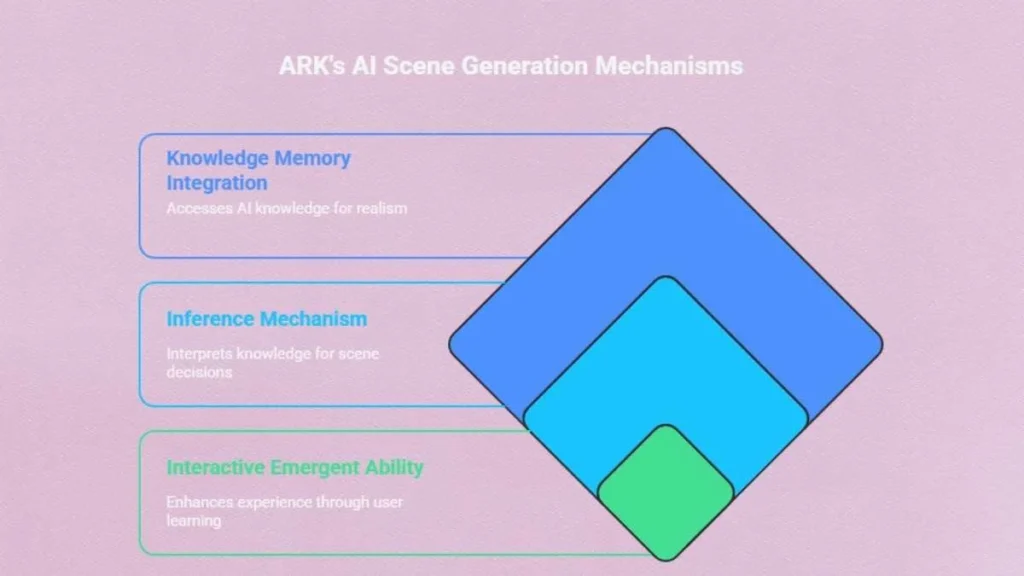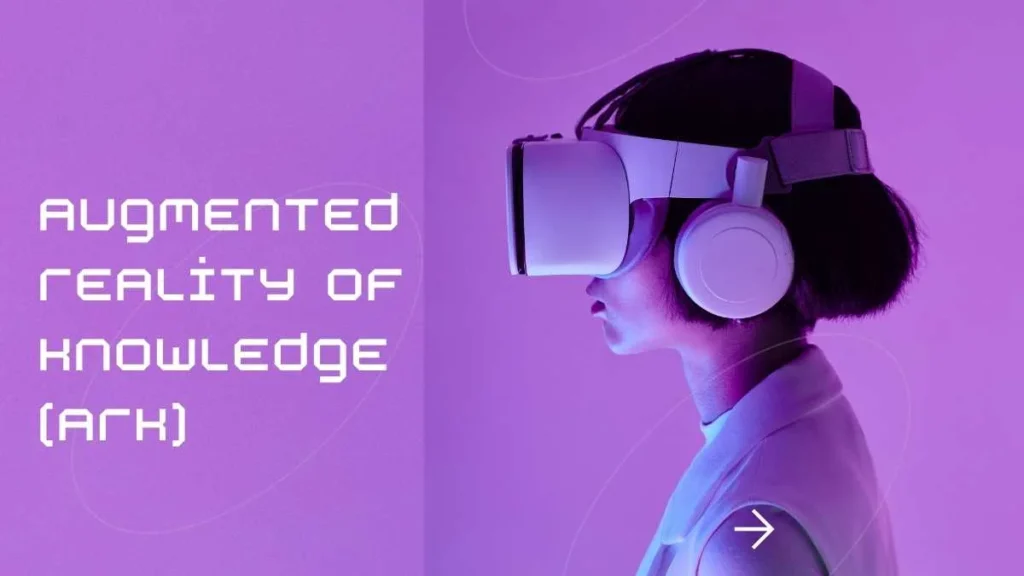TECH
ARK Augmented Reality: AI-Powered Immersive Scene Creation

ARK, short for Augmented Reality with Knowledge Inference Interaction, is an advanced AI-driven framework designed to elevate augmented reality experiences by seamlessly integrating digital content with the physical world. Unlike traditional AR systems that rely heavily on domain-specific training data, ARK leverages the knowledge memory of large foundation models to quickly generate, interpret, and adapt 2D and 3D scenes in both familiar and unfamiliar environments.
This innovative approach enables ARK to create highly immersive, context-aware experiences across diverse applications, including gaming, the metaverse, mixed reality systems, and professional simulations. By tapping into pre-existing AI knowledge, ARK reduces development time and costs while delivering more dynamic, interactive, and scalable AR experiences than conventional AR solutions.
Table of Contents
Leveraging AI Knowledge Memory for Immersive Environments
ARK Augmented Reality departs from conventional AR approaches by tapping into the vast knowledge embedded within foundation models. This knowledge memory enables the system to rapidly understand objects, spatial layouts, and interactions in new environments without requiring extensive retraining. By using this AI-powered repository, ARK can quickly generate contextually accurate scenes, enhancing the realism and immersion of augmented reality applications. The framework’s capacity to adapt to unfamiliar spaces allows it to be implemented across diverse industries, from gaming and the metaverse to mixed reality systems and training simulations.
Core Mechanisms Behind ARK Augmented Reality
ARK relies on three integrated mechanisms that drive its adaptability and interactive capabilities:
Knowledge Memory Integration
ARK Augmented Reality accesses pre-existing AI knowledge to understand objects, spaces, and environmental interactions. This repository allows it to generate realistic scenes and anticipate how elements should behave in context.
Inference Mechanism
The inference mechanism interprets the knowledge memory to make real-time decisions for scene creation and adaptation. This ensures that virtual elements align seamlessly with their surroundings.
Interactive Emergent Ability
ARK Augmented Reality learns from user interactions to continuously enhance the augmented experience. This emergent capability allows virtual content to respond dynamically, creating more engaging and natural interactions.

ARK’s Advantages Over Conventional AR Technologies
| Feature | Traditional AR Systems | ARK (Augmented Reality with Knowledge Inference Interaction) |
| Data Requirement | High – Requires extensive domain-specific datasets | Low – Leverages pre-existing AI knowledge memory |
| Adaptability | Limited – Struggles in unfamiliar environments | High – Generates and adapts scenes in new spaces |
| Context Awareness | Moderate – Mostly static content | Advanced – Creates context-aware, immersive experiences |
| Development Time | Long – Manual calibration and training needed | Short – Streamlined by AI-driven inference mechanisms |
| Scalability | Moderate – Scaling requires additional data | High – Efficient across multiple applications |
Key Components Enhancing Adaptive AR Experiences
- Knowledge Memory Integration: By accessing the extensive AI knowledge embedded in foundation models, ARK generates realistic and contextually appropriate scenes across diverse environments.
- Inference Mechanism: Advanced inference techniques allow ARK to apply knowledge memory intelligently, ensuring augmented elements behave consistently with real-world contexts.
- Interactive Emergent Ability: This feature enables AR content to respond naturally to user interactions, creating dynamic, engaging experiences that improve with continued use.
Mixed Reality Systems and Adaptive Simulations
In mixed reality systems, ARK Augmented Reality improves scene generation and editing by seamlessly merging virtual elements with real-world contexts. This capability ensures that digital objects are correctly aligned and interact naturally with physical environments. Beyond entertainment, ARK supports industrial and professional training by simulating realistic scenarios. Trainees in fields such as healthcare, aviation, and defense can practice in controlled virtual settings that adapt to their actions, improving learning outcomes while reducing costs and risks associated with real-world training exercises.
Industry Applications for Adaptive AR
ARK’s capabilities span multiple sectors:
- Gaming: Generates dynamic 2D and 3D worlds that respond to player actions, creating interactive, immersive experiences.
- Metaverse Development: Powers evolving virtual environments that adapt to user behavior for highly engaging experiences.
- Mixed Reality Systems: Enhance collaboration and interaction by integrating virtual objects seamlessly with real environments.
- Industrial Training: Simulates realistic scenarios for safe, cost-effective, and responsive learning.
- Education: Enables interactive, context-aware learning environments.
- Healthcare: Supports AR-assisted procedures and simulations for improved training, precision, and patient engagement.
Future Directions for Knowledge-Driven AR
Future development of ARK Augmented Reality will focus on enhancing knowledge memory integration for more detailed scene generation, expanding cross-modality capabilities with visual, auditory, and haptic inputs, improving scalability for complex environments, and addressing ethical considerations such as privacy, data security, and responsible AI use.

Frequently Asked Questions
How does ARK Augmented Reality adapt to unfamiliar environments?
It leverages knowledge memory from foundation AI models to generate and modify scenes without retraining.
Can ARK Augmented Reality be used outside gaming and the metaverse?
Yes, it applies to education, industrial training, healthcare, and mixed reality systems.
Does ARK Augmented Reality reduce development costs compared to traditional AR?
Yes, by using pre-existing AI knowledge, ARK eliminates extensive data collection and training, saving time and resources.
Conclusion
ARK Augmented Reality represents a significant advancement in augmented reality technology, offering an AI-powered framework that is scalable, context-aware, and highly interactive. By harnessing the knowledge memory of large foundation models, ARK generates and adapts high-quality 2D and 3D scenes for real and virtual environments, overcoming the limitations of conventional AR systems. Its applications across gaming, metaverse development, mixed reality, and industrial training illustrate its versatility and potential to transform industries. As ARK evolves, it promises more immersive, adaptive, and engaging AR experiences, making digital-physical integration smarter, faster, and more intuitive than ever before.
-

 FRIENDSHIP MESSAGES2 months ago
FRIENDSHIP MESSAGES2 months ago100+ Heart Touching Sorry Messages for Friends
-

 ANNIVERSARY WISHES6 months ago
ANNIVERSARY WISHES6 months ago100+ Beautiful Engagement Anniversary Wishes Messages and Quotes
-

 BIRTHDAY WISHES5 months ago
BIRTHDAY WISHES5 months ago300+ Happy Birthday Wishes for Brother | Heart Touching Happy Birthday Brother
-

 BIRTHDAY WISHES6 months ago
BIRTHDAY WISHES6 months ago200+ Unique Birthday Wishes for Your Best Friend to Impress on Their Big Day
































